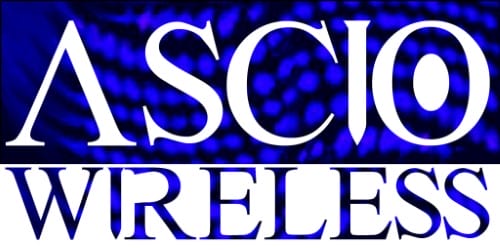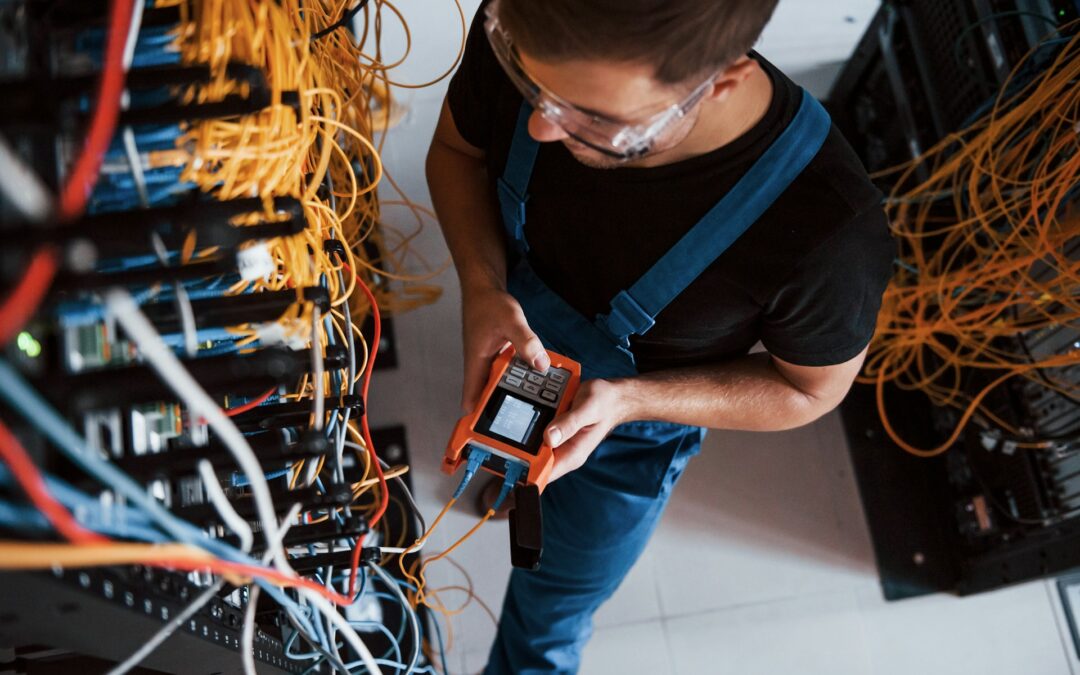When most people think about issues with their data cabling, they usually blame slow internet, bad wiring, or old equipment. But there’s something more invisible that can cause just as many problems—electromagnetic interference, also known as EMI. It’s a type of interference that messes with the signals traveling through your network cables, especially when those cables aren’t installed the right way or protected correctly.
In a city like Boston, where commercial buildings go back decades and modern electrical devices are everywhere, EMI can sneak into your network without warning. Businesses often don’t realize it’s happening until things start to lag or data doesn’t flow like it should. A clean and steady connection should never be taken for granted. To keep your systems running as they should, it helps to understand where EMI comes from and how to block it before it causes trouble.
Understanding Electromagnetic Interference (EMI)
EMI happens when unwanted electromagnetic signals disrupt how your data moves from one place to another. These signals can come from your own office equipment or from sources outside your building. The problem is, you can’t see it or hear it happening. It just shows up as slow speeds, low-quality calls, or systems that don’t respond the way they’re supposed to.
There are two main types of EMI:
1. Natural EMI
This type comes from environmental forces like lightning or solar activity. While these are harder to control, they don’t often cause day-to-day trouble in a typical office setting in Boston.
2. Man-made EMI
This is more common and far more problematic. It comes from items like fluorescent lights, elevators, motors, microwaves, HVAC systems, or even nearby power lines. In a busy city like Boston, these signals are pretty much everywhere.
Some typical EMI trouble spots in Boston buildings include:
– Server rooms with too much equipment placed too close together
– Offices located near subway lines or underground electrical tunnels
– Older buildings where data cables run next to high-voltage electrical lines
– Workstations near microwaves or industrial equipment
As tech becomes more wireless and devices demand higher speeds, older data cabling is more vulnerable. Even with relatively new cables, if they aren’t installed correctly or shielded properly, EMI can creep in and mess up your network flow.
Best Practices For Shielding And Grounding
Shielding and grounding are two of the best ways to reduce EMI before it gets into your system. Good shielding blocks outside interference, while proper grounding creates a safe path for excess electricity to escape, keeping your data signals cleaner and more stable.
Here’s a look at common shielding types:
– Foil Shielding: A thin layer of metal wraps around the cable group. It’s good against higher-frequency interference but might tear if bent too sharply.
– Braided Shielding: Flexible and durable, this mesh blocking method holds up well in tighter spaces with frequent movement.
– Combination Shielding: Uses both foil and braid to cover a wider range of interference. Ideal in environments with heavy electronics.
Grounding works together with shielding. If you use shielded data cables but skip proper grounding, the shield won’t do its job. Grounding paths need to be continuous, meaning the cables, connectors, and metal boxes must all be connected correctly to a single grounding point. Skipping a step here causes parts of the system to pick up more interference than they block.
Doing shielding and grounding the right way isn’t just about putting the right products in place. It takes planning. You need to think through where the cables run, how far they stretch, and what they’re sitting near. For example, if a cable passes behind your building’s breaker panel, even strong shielding might not be enough on its own.
These details explain why it’s always smart to work with someone who’s trained in dealing with interference. Installing shielded cables without knowing how to terminate them the right way can do more harm than good and can lead to worse interference than if you hadn’t tried shielding at all.
Choosing The Right Cable Type To Reduce EMI
There’s more to preventing EMI than just where you run your cables or how you shield them. What kind of cable you use matters too. Some cables are better at resisting interference than others, and knowing the difference can spare you a lot of future issues.
Twisted pair cables are a strong choice for most office settings. The wires inside twist around each other in a specific pattern, which helps cancel out unwanted signals from outside sources. This makes them great in buildings where power lines, HVAC equipment, or other electronics are close by. Category 5e (Cat5e) and Category 6 (Cat6) cables are common options. Cat6 tends to perform better at higher speeds and is a bit more resistant to noise than Cat5e. If your business handles tasks that rely on fast uploads or frequent data backups, Cat6 will give you more room to grow.
Fiber optic cables are another smart route, especially if you’re in a dense part of Boston that’s full of signal-heavy systems. Fiber doesn’t carry electricity, so it’s not affected by EMI the same way copper cables are. That makes it a good option for noisy environments with a lot of motors, lights, or old electrical setups.
If you’re unsure which cable is right, here’s a quick look at how they hold up against EMI:
– Cat5e – Widely used and budget-friendly, but can be less effective in high-interference zones
– Cat6 – Better shielding and tighter twists make this more reliable in EMI-heavy areas
– Fiber Optic – Immune to EMI since it transmits light instead of electrical signals
Spending a little more on a better cable now can save you from having to redo installations later. That’s especially true in large office buildouts or remodel projects where re-running cables through walls or above ceilings is a real hassle.
Installation Tips To Help Prevent EMI
Even premium-quality cables won’t help much if they’re installed the wrong way. EMI protection isn’t all about what you buy. It’s also about how everything gets set up. Making small mistakes during installation can throw off signal quality across the whole office.
Start with routing. Data cables shouldn’t run parallel to electrical wiring for long stretches. The constant magnetic field around those wires will seep into data lines and cause interference. Instead, run them at 90-degree angles when they need to cross paths. Cable trays should be planned carefully so data lines are kept away from things like AC systems, switchgear, and overhead lighting.
To reduce EMI risk further:
– Keep at least 12 inches of space between data cables and fluorescent or LED lighting
– Don’t run data cables near elevator motors or large industrial machines
– Use metal conduits in areas with heavy interference to add an extra layer of protection
– Avoid tight bends that can damage cable shielding
– Group cables by type and purpose so they don’t interfere with each other
Professional installers also check the length of each cable run. If data lines are too long or daisy-chained without proper planning, interference builds up over distance and weakens the signal.
An installer familiar with Boston’s older buildings knows that interference risks vary from floor to floor. What works in a newer downtown office may fail inside a brownstone-turned-office with thin walls and mixed-use wiring. Every space needs its own plan, and skipping that planning step often means more costs down the line.
How ASCIO Wireless Can Help
Managing EMI in data cabling takes real experience, and ASCIO Wireless brings that to the table. With a deep understanding of Boston’s buildings and the challenges of electrical interference, our team handles all parts of the job, from recommending the right cable type to full professional installation. We don’t just toss cables through ceilings and hope for the best. We map out where issues might pop up and stop them before they start.
Keeping Interference Out of Your Business Systems
Tackling EMI early makes a difference. Clean, steady signals mean faster speeds, fewer data errors, and better consistency across team devices. When your network cables are planned and installed to block interference, you’ll spend less time troubleshooting and more time focused on getting work done.
For Boston businesses, strong data cabling isn’t a luxury. It’s the backbone of everything from file sharing to video calls. Whether you’re dealing with old wiring in a converted space or you’re wiring a new build, EMI can sneak into your setup. Staying ahead of it starts with the right cables, smart design, and solid installation methods. Getting those right saves time, keeps your systems stable, and helps everything run smoother from day to day.
Ensure your business runs smoothly with expertly managed systems that keep EMI out of your workflow. By partnering with ASCIO Wireless, you gain access to tailored solutions and deep experience in Boston’s infrastructure. To support your network’s reliability and performance, explore how our data cabling services can make a lasting difference.

